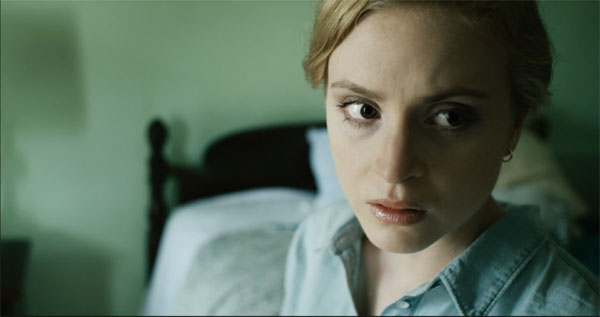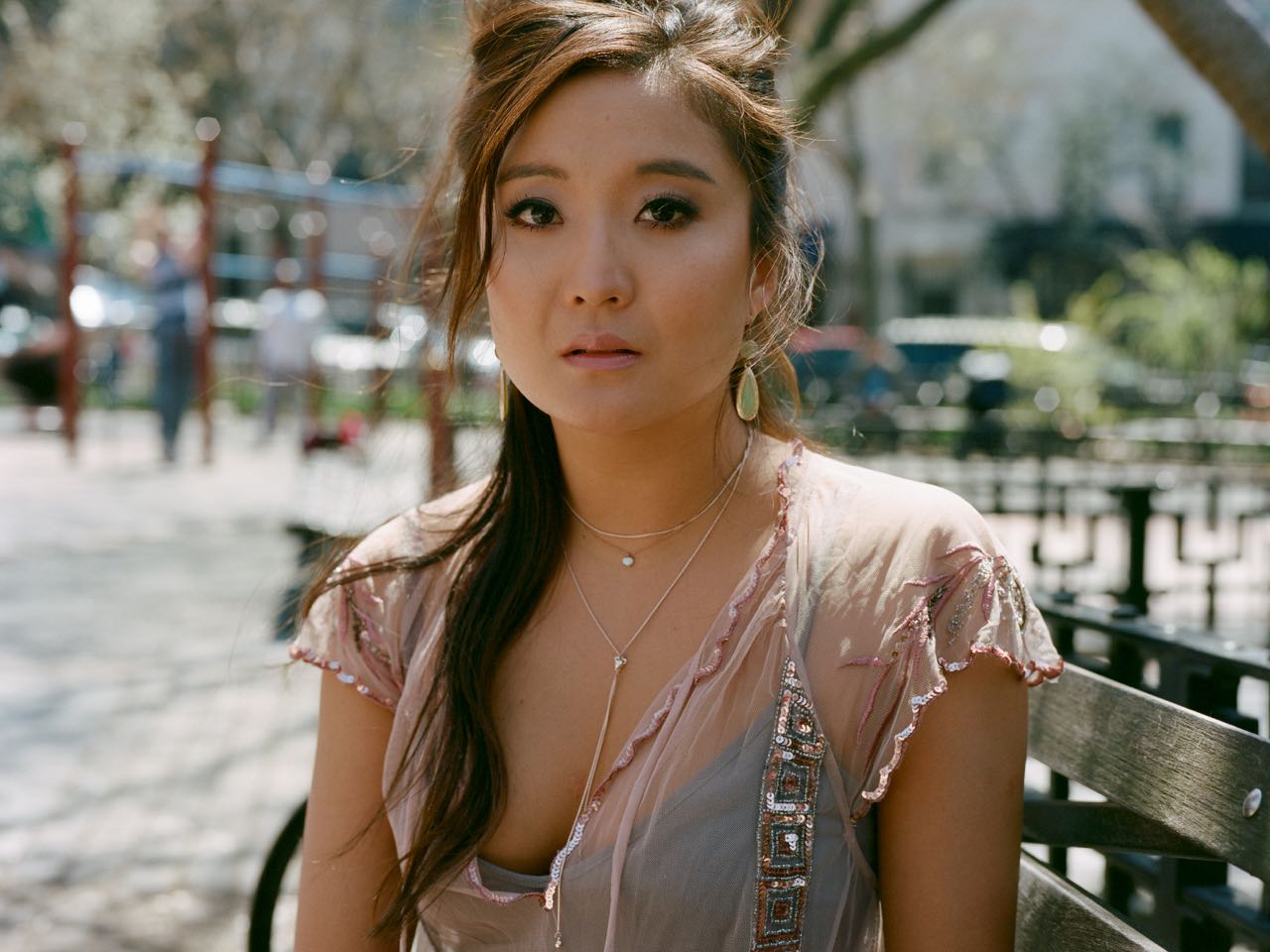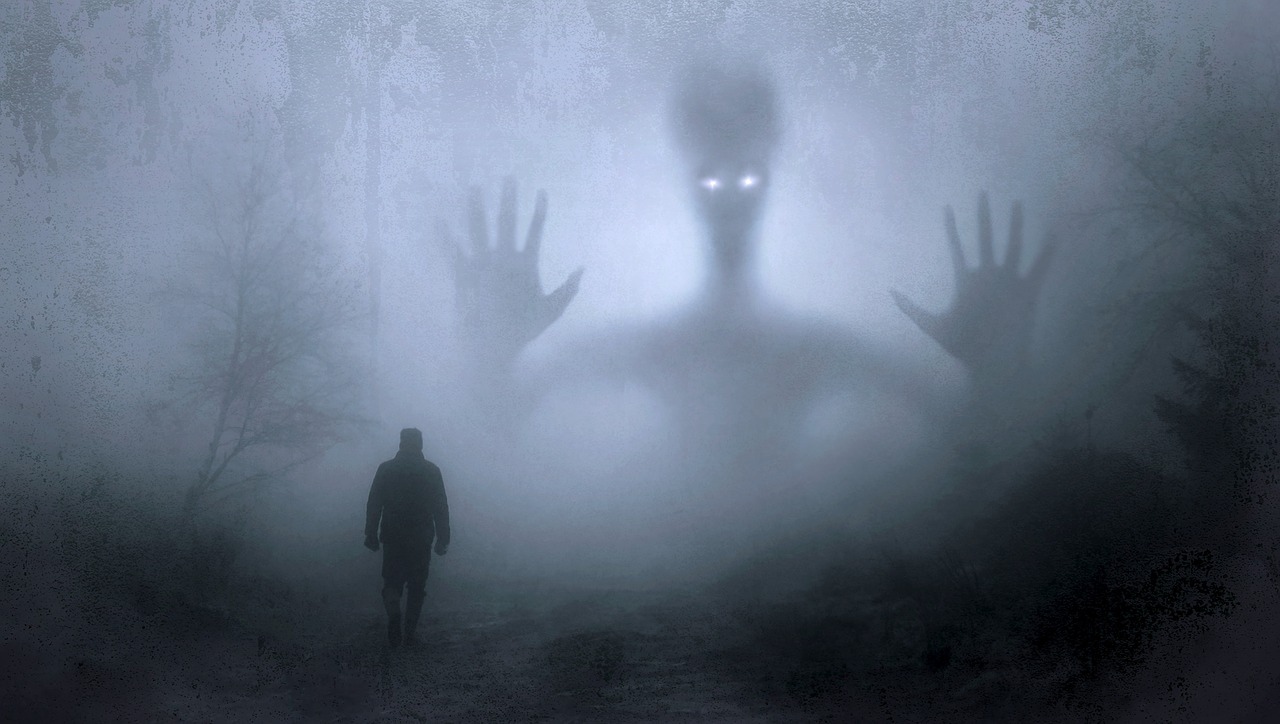Where did the idea originate?
After graduating from film school, Austin and I decided that instead of being responsible and getting a real job we wanted to just jump in and make a feature film. So we did it! We knew we wanted to shoot the film in Kansas where we grew up, and we knew we wanted to make a haunted house movie because we love the genre so much (and because we believe we grew up in a haunted house). So we moved back to Kansas and got an apartment with Natalie (our co-writer/producer), and we all just started brainstorming and talking and coming up with the story. It took us 8 months to write, and we ended up going through 6 different drafts, but we finally got the script where we wanted it and jumped right into preproduction. The whole process of writing, production, and post-production took only about a year and a half.
What was the appeal for you?
We love horror movies. All three of us have a wide range of taste when it comes to film, but the horror genre is something that we all seem to gravitate towards. There is something so fun about horror, so primal and immediate – the shock, the suspense, the fun of a good scare. Some of our most formative memories of watching movies are memories of horror films, so we thought it would be a great place to start! That being said, we wanted to come at this film from a different perspective. Though horror is great, too many films in the genre focus too much on gore and violence without any purpose. We wanted to ensure that the film would resonate with all types of viewers, even those who aren’t normally fans of horror. We did that by focusing on creating flawed, complex characters to populate the film and making sure that we handled the ‘hauntings’ with a more ‘realistic’ approach than what is normally seen.
Were any past films, filmmakers or film characters a heavy influence on the film?

So many movies have influenced us in one way or another, from “American Beauty” and “Magnolia” to “Synecdoche, New York” and “Requiem for a Dream.” The work of David Lynch, Lars von Trier, Paul Thomas Anderson, and more, have all been big inspirations. Specific films that influenced our movie include “Take Shelter,” “The Blair Witch Project,” “Black Swan,” “Rosemary’s Baby,” and “The Others.” Surprisingly, the biggest influence on this film is actually a book—“The Haunting of Hill House” by Shirley Jackson, which all three of us have read it (we actually read it together, out loud!). The book is a classic haunted house story told with emphasis on character, realistic terror, and psychological ambiguity—a definite inspiration for the type of movie we wanted to make.
How much did the script change between draft and shooting script?
It changed A TON. We went through 6 drafts during the writing process and the final product, while still retaining the same overall ideas and themes, is an entirely different movie than what our rough draft laid out. Just to give an idea of how much things changed: in the final movie, Jennifer moves into the house on Pine Street when she is about 7 months pregnant – in the first draft, she got pregnant on the first night she spent in the house. So the timeline drastically changed from the first draft to the last. Also, certain characters didn’t even come into the script until the 3rd or 4th drafts. Marlene and Walter, for example, weren’t in the first draft or two. And then there’s the length. While we find that the final product is a bit long, especially for a horror film, it’s actually quite short compared to what we started with. Our shooting script was about 111 pages, but our first draft was a whopping 173 pages. I remember right after we finished the first draft, Austin, Natalie and I sat down to do a read-through and it lasted something like four and a half hours. By the end of it we wanted to jump off a cliff, and we basically set the script aside for a month without looking at it and vowed to do everything in our power to cut it down and make it less terrible. First drafts are rather traumatizing, we’ve learned.
Were any of those changes dictated by a changing budget?
Honestly, no. From the beginning we knew that our budget was going to be low – very, VERY low. And that never changed. Once we set a budget, it pretty much stayed exactly in place, so there were no surprises on that end. But even though we knew we wouldn’t have much money to make this movie, we didn’t let it stop us or hinder us. We wrote the film with the mindset that we could figure anything out. Instead of editing ourselves during the writing, we wrote the script exactly as we wanted. Then it was just a matter of figuring out how to go about achieving our vision with the money available. It definitely forced us to think creatively and frugally, but we didn’t end up having to cut anything due to budgetary restraints.
Where was it shot?
The film was shot entirely on location in several historic homes in the Kansas City area. Austin, Natalie, and I grew up in Leavenworth, Kansas, and we knew we wanted to return to our hometown to shoot our first film. We were so lucky to get a chance to shoot in these houses, many of which are hundreds of years old and brimming with character. The residents who welcomed us into their homes were not only generous and instrumental in the making of this film, but have since become lifelong friends of ours who have truly touched our lives. And as for the main house, we actually found that location by posting an ad on Craigslist. It was a stretch, and we didn’t know if anything would come out of it, but on the day before the ad expired we were contacted by Frank Smith of Independence, Missouri who told us he had a house that was built in the 1840s that was currently unoccupied and that we could film in it and live in it and paint and wallpaper and basically do whatever we needed to do. We went and saw the house and we were immediately sure that it was the one. We couldn’t have been luckier, or asked for a better experience.
You’ve been getting great reviews – how much easier was it to find a distributor because of that?
The reviews have definitely helped a lot. We didn’t know what to expect going in, since this was our first film and our first time dealing with reviews of any kind, but overall the experience has been pretty awesome. We are still working on distribution with our sales agent (Raven Banner Entertainment), so the reviews haven’t magically provided us with all our needs (though it looks like we’ll be receiving a general release sometime by April of 2016!). But they’ve absolutely helped to bolster our credibility and increase interest in the film. We were lucky enough to receive a positive review from Variety pretty early on, and that review has helped us so much. Whenever we send the film out to any type of outlet (agents, critics, etc.) we include the Variety review. And it works – the amount of genuine responses we receive has grown exponentially.
Were you a fan of horror growing up – or is that a given?
Absolutely. Almost all of our earliest movie memories are of horror films. I can remember watching The Blair Witch Project with my mom when it came out on VHS, seeing Poltergeist for the first time on TV when I was probably much too young to be watching it, and hunkering around the computer to watch a low-quality bootleg version of The Ring and being scared to death. As kids, Austin and I used to go to Blockbuster or Hollywood Video at least once or twice a week and just peruse the horror section, picking new movies almost at random and taking home a stack to watch throughout the week. We started reading Stephen King when we were ten or eleven years old, and quickly devoured everything in his catalogue, eventually branching out into more and more horror literature. Horror is in our blood, and we’ve loved it for as long as we can remember.
Do you think you have to be a horror fan to direct a horror movie?
I think so, yes. Horror is a lot like comedy, in my opinion. You have to know the genre deeply, know what works and what doesn’t, know what’s been done and what can be changed to make something fresh, in order to successfully make a film in either genre. I’m not going to name names, but there was a very high-profile, wildly popular horror film that came out this past year that was directed by someone who had never directed horror before. Though most people loved the movie, I was very disappointed by it. It worked well as a movie overall, but as a horror movie I think it failed. So yes, I think you need to be familiar enough and passionate enough about the genre to really do it right.
Where did you find your actors?
Most of the actors were found locally in Kansas City. We held multiple casting sessions and we got very lucky. We saw between 250 and 300 auditions in person, with about 100 more taped auditions sent in. And for the most part, the talent was very impressive. The only two actors who were not from Kansas City were Emily Goss (who plays Jennifer) and Natalie Pellegrini (who plays Lauren). Austin and I went to USC with Emily, though we didn’t know her very well until this film. Austin had helped out on a shoot she was involved with, and later directed a small spec commercial project with her. We found most of what we were looking for in the local auditions, but we asked for taped auditions from a few actors out of the state. Emily was one such actress, and when we saw her taped audition we were blown away and knew we had found our “Jennifer.”
Was it a quick shoot?
It was! The writing process took the longest – about 8 months to get through the 6 drafts of the script. This was followed by two or three months of preproduction, and the shoot itself lasted only 19 days (with no off days). It all happened so fast, and we’re frankly amazed we got it all done in time. But we loved the experience, and we learned a TON (like how important scheduling off-days during the shoot is!).
Since it’s completion, it’s been screening at festivals – is that correct?
That’s correct! We debuted in February at Cinequest Film Festival in San Jose, CA, and have since been traveling the world showing the film. We have shown in Fargo, New Orleans, Phoenix, and several more in the U.S., and in Spain, Mexico, and Canada abroad. In total, we’ve screened at 14 festivals, with a few private cast and crew screening mixed in. Suffice it to say, we’ve seen the movie A LOT.
What are your plans for the film?
We are still securing distribution with our sales agent, with a plan for general release in the first quarter of 2016.
Are you working on anything else at the moment?
We have a few other projects in the works. We recently received funding for a short film (another horror) that we’ll be shooting in January, and we’re also currently at work on our next feature length script (we are halfway through our second draft right now). It, too, is a horror screenplay, and it deals with a small town in the Midwest and a local legend about a creature in the neighboring woods. It’ll be awhile before we get to bring it to life, but we’re extremely excited about it!









